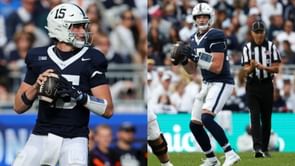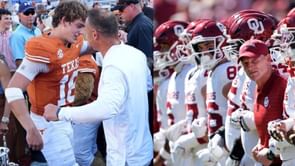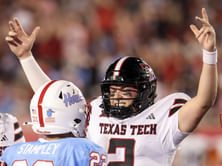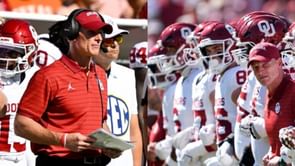
The athletic teams representing Tulane University, which is based in New Orleans, Louisiana, are known as the Tulane Green Wave. As a part of the American Athletic Conference (AAC), Tulane participates in NCAA Division I. Two of the 14 Green Wave intercollegiate programs compete against programs outside of the AAC. Conference USA (C-USA) is home to women's sports like beach volleyball and bowling, which are not supported by the AAC.
Tulane University is a private research university located in New Orleans, Louisiana. Seven young physicians founded the Medical College of Louisiana in 1834, and in 1847, the state legislature changed it to become a comprehensive public university called the University of Louisiana. In 1884 and 1887, Paul Tulane and Josephine Louise Newcomb made the institution private through their endowments. The 12th oldest law school and the 15th oldest medical school in the country are Tulane University Law School and Tulane University Medical School.
READ MORE: What is the capacity of the Neyland Stadium?
What is the Tulane Green Wave Mascot’s history?
Riptide the Pelican, who has represented the Green Wave since 1998, is the mascot as of September 2025. The mascot pays tribute to the program's original design, which was a pelican riding a surfboard that served as Tulane's mascot and program logo for more than 50 years. Since the Olive and Blue (Tulane football team) started playing football in 1893, the Green Wave mascot has changed several times, in contrast to other programs that have had the same mascot for many years.
Up until 1966, the university participated in the Southeastern Conference (SEC) as a charter member. In the 1950s, Tulane and other academically focused private schools discussed establishing the Southern Ivy League, also known as the Magnolia Conference. In 1995, it became a member of Conference USA. The university declared in 2012 that starting in July 2014, all of its sports would be played in the Big East Conference, later renamed the American Athletic Conference.
The Greenie Mascot
A "mischievous little boy" was introduced in 1945 to replace the original surfing pelican mascot. Local cartoonist John Chase created that specific Tulane mascot, naming it "Greenie" in honor of the football program's prefix at the time.
Greenie served as Tulane's mascot for nearly 20 years. But in 1964, the university made the decision to replace the "mischievous little boy"—once called "the most accurate symbol that's ever represented Tulane's student body"—with the mascot that would come to be associated with the program's moniker.
The Angry Wave Mascot
In 1964, the Green Wave mascot was adopted as the primary emblem of the Tulane football team. The program was formally dubbed the Green Wave in 1920, but it took more than 40 years for the mascot to adopt the program's moniker.
The "Angry Wave" was the moniker given to the original Green Wave mascot. The mascot's outfit was basically a huge green sack with a face on it, but it was supposed to represent how a wave looks as it breaks.
After its creation, the Angry Wave mascot gained popularity among audiences for almost two decades. The Angry Wave underwent several modifications, the last of which was known as "Gumby." It remained the official Tulane mascot until 1998
Poseidon Mascot
The Gumby was challenged in the 1980s by a challenger, the god of the sea, horses, and earthquakes, Poseidon, who gained popularity at the Tulane games. Wearing a toga embroidered with the Tulane logo from 1986, he also had a set of horns that matched the many artistic interpretations of the Greek deity. Poseidon, also known as Neptune, was a fan favorite, but he was never the official Tulane Green Wave mascot.
Chronology of Green Wave Mascots
Green Wave Mascot (Before 1945): Since Tulane football's founding in 1893, the team has used a pelican riding a surfboard as its mascot.
Greenie Mascot (1945–1964): In 1945, cartoonist John Chase's mischievous boy "Greenie" took the place of the surfing pelican as the official mascot for almost 20 years.
Angry Wave Mascot (1964–1998): Originally a simple green sack, the "Angry Wave" became the official emblem in 1964 and, by the 1980s, had taken on a popular "Gumby."
Poseidon Mascot (1986; unofficial): In 1986, Poseidon, the sea god, experienced a brief surge in popularity during Tulane games. He was seen sporting a toga embroidered with the Tulane logo.
Riptide the Pelican (1998-Present): Since 1998, Riptide the Pelican has been the current mascot, paying homage to the original surfing pelican and representing Tulane's Green Wave.
What is a Green Wave?
One of the more peculiar nicknames in college football is the Green Wave. The Tulane football team was simply known as the Olive and Blue between 1893 and 1919, a reference to the distinctive color scheme that they still wear today. The Tulane Weekly (Tulane Hullabaloo) termed them the Greenbacks in 1919. But in 1920, the football program started to feel the effects of change.
The song "The Rolling Green Wave," written by Earl Sparling, became so well-known that the Tulane Hullabaloo nicknamed the team the Green Wave by the end of the 1920 game between Tulane and Mississippi A&M. The Tulane mascot was inspired by the Green Wave, which became the official moniker, even though some people continued to use the Greenbacks and Greenies for a while.
FAQ's on Tulane Green Wave Mascot’s History
A. Riptide the Pelican has been the mascot since 1998, honoring the original surfing pelican that symbolized Tulane for over 50 years.
A. Before Riptide, there were mascots like Greenie (1945–1964), Angry Wave (1964–1998), and Poseidon (1986, unofficial).
A. Tulane joined the American Athletic Conference (AAC) in 2014, moving from Conference USA (C-USA) and previously the Southeastern Conference (SEC).
A. The nickname "Green Wave" originated in 1920, when the song "The Rolling Green Wave" inspired the name change.
A. In 1884 and 1887, Tulane became a private university through endowments from Paul Tulane and Josephine Louise Newcomb.









